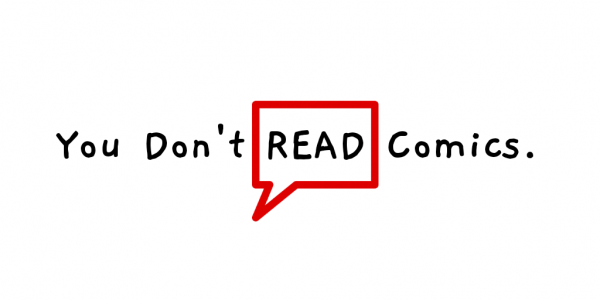Vampirella #673 // Review
Katie is trying to give mouth-to-mouth resuscitation to herself. It IS an older version herself that happens to be a vampire. And she’s not too terribly happy about the situation, but when she wakes-up with enough time to become aware of the situation, Katie’s older self has a lot to deal with. The whole world is literally trying to kill her in Vampirella #673. Writer Christopher Priest rushes through a crazy, manic series of supernatural horror scenes with artist Iván F. Silva and colorist Savatore Aiala. The current issue’s run of events feel a bit more powerfully assembled than Priest has managed in many of the issues leading-in to this one.
Elsewhere into the future, a young girl finds her sketch defaced on a school wall. She’s going to look for revenge. Meanwhile, the vampire who was saved by her younger self is in a really bad way. She’s self-destructive. The sings of this are not subtle. At one point she literally holds a gun to her own head. Vampirella is trying to confront her, but it might be a hell of a lot more difficult than it may seem on the surface. Things are getting hopelessly complicated due to the time travel and the splitting realities that seem to dominate everything.
Priest’s nonlinear plant continues to embrace a kind of chaos that seems reasonably appealing. In places, it's absolutely absolutely devastating. Some of what he's putting to the page really is exploring the psychological nature of reality and how it interacts with everything. And it can be very difficult to get into that kind of emotional that priest is managing here. It's all very impressive and it own way. And it's hard to imagine things being that much more chaotic than they are on the page here. It's one thing to have a hero. Go up against the substance of chaos. It's another thing entirely that throw the entire script into the conflict as well. Perspective, what Priest is doing is very impressive. It's very inspired. It's just too bad. It's not coherent.
Silva and Aiala’s fluctuations in and within the art continue to amplify and express the sense of chaos on an admisrably simple level. The alternation between black-and-white and color scenes brings across the sense of uneasiness. The art itself is drawing on a lot of things that can occasionally be horrifying and occasionally be beautiful. So there is kind of a uneasiness about that as well. It all flows quite well from various elements that are moving across the page in various ways that feel, like they are able to engage deeper, inexpressible emotions and occasionally they do.
One of the big challenges with a non-linear narrative is creating a sense of rising action. Intensifying intensity of conflict is kind of hard to show on the page when you've got so many different scenes that are going in so many different directions. They're actually doing a pretty good job of showing that this is a moment of attention. There are some very strong emotions being expressed. There are some very consequential showdown going on. It's hard to imagine how much longer they would be able to maintain this without it just sort of disintegrating into a kind of narrative nebulosity, though.










